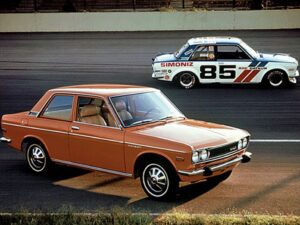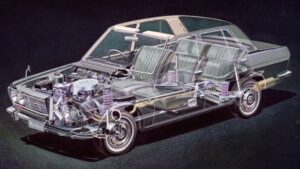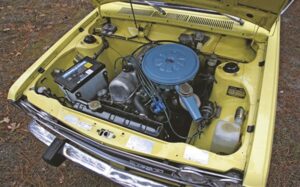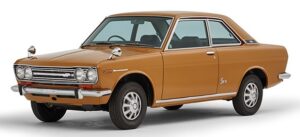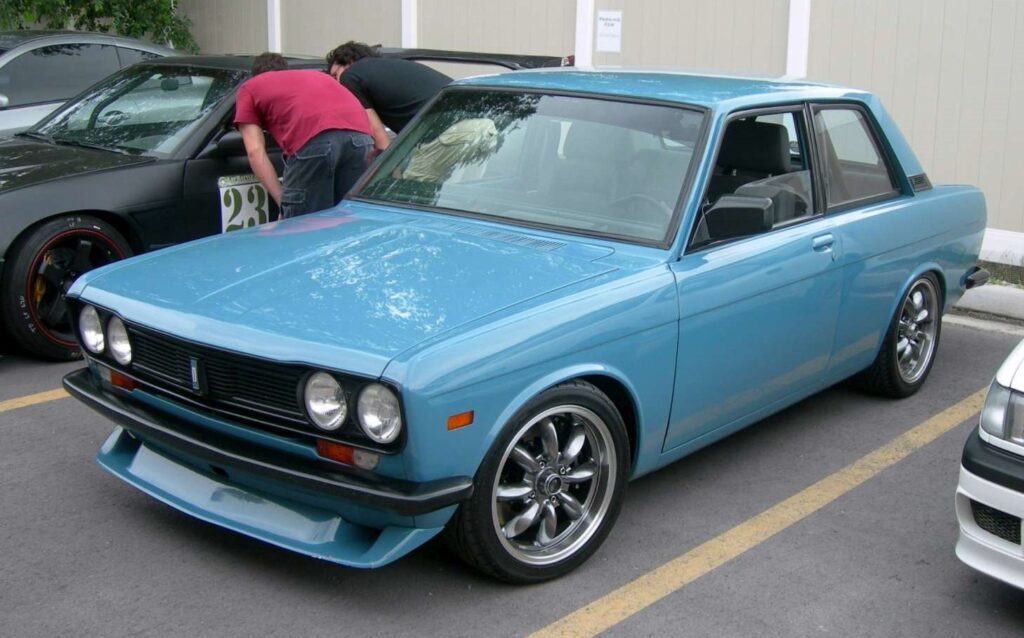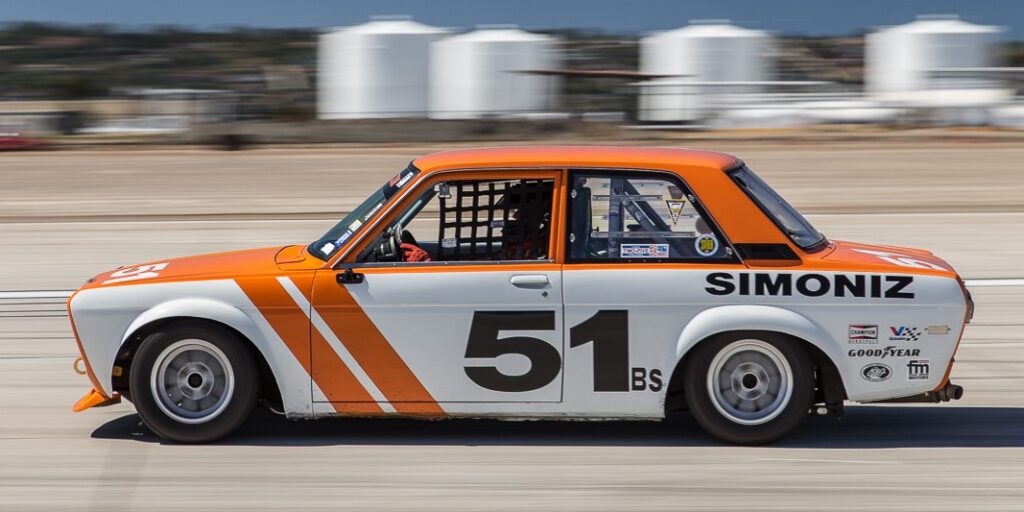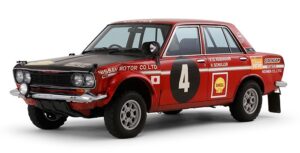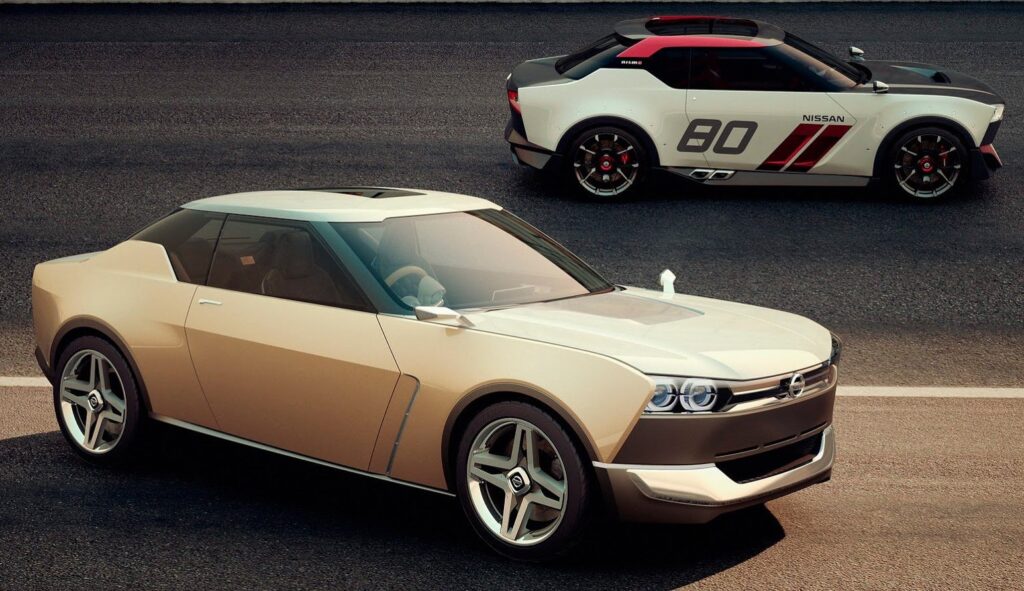Our featured Japanese Old School classic car, the 1968-73 Datsun 510, is often referred to as the “poor man’s BMW 3-series”. Inspired by contemporary European sedans, its sheet metal design is attributed to Datsun in-house designer, Teruo Uchino. Known internally as the P510 for the right-hand-drive (RHD) and as the PL510 for the left-hand-drive (LHD) markets, it was part of the Datsun Bluebird model range that debuted in October 1967.
The 1968 Datsun 510 featured a 1.6-liter inline 4-cylinder single overhead camshaft (SOHC) L-series engine (L16) fed by a single Hitachi downdraft carburetor that produced 96 horsepower. Transmission choices were either a 4-speed manual or a 3-speed automatic. Four-wheel independent suspension came in the form of McPherson struts in front and independent, semi-trailing arms in the back. Front discs and rear drum brakes haul the 510 from a claimed 160 km/h top speed.
Datsun 1600
In 1968, the PL510 two-door sedan was marketed in the U.S. and Canada as the “Datsun 1600” to associate it with the popular 1966 BMW 1600. Because of the limited introduction time, the 1968 U.S. 510 became the rarest 510-year/model. In 1969, the Bluebird 1600 SSS Coupe (KP510T), a two-door sporty coupe with a swept roofline and a shorter deck lid, became available in Japan’s domestic market (JDM) to complement the two-door sedan, four-door sedan, and five-door wagon Bluebird model range.
However, the two-door sedan was the most popular 510 body style among Stateside buyers until 1973. In some markets, 510s were equipped with twin Hitachi side-draft carburetors bolted to engines with enhanced compression and camshaft profiles to produce more power. SSS models offered upgraded instrument, interior trim, and appropriate exterior badges.
Successes and Collectability
Early Datsun car models featured interchangeable parts where engines, transmissions, and suspension setups can be swapped with minor modifications. The stock 1600cc L16 can be upgraded to the 1800cc L18 or the 2.0-liter L20B engines while the 4-speed can be upgraded to the 5-speed manual transmissions from the early 200SX and 280Z cars. Car collectors go for bone-stock 510s with original L16 engines while Datsun 510 enthusiasts tend to upgrade theirs with L18, L20B, or even modern SR20 engines.
The 510 became famous for Nissan/Datsun’s racing and rallying successes outside Japan, especially in the U.S. Trans American (TransAm) circuit racing series, Sports Car Club of America (SCCA) production class races, and the Australian Rally Championship. Affordable performance combined with simple and reliable mechanicals helped it remain a popular enthusiast’s race car.
While the Datsun 510 didn’t gain the same popularity in the Philippines as it did in other countries, avid collectors can be found in Japan, Australia, and America. It continues to wield its influence as shown by the 2013 IDx Freeflow and 2014 IDx NISMO Nissan concept cars.
 Power Wheels Magazine A Notch Above
Power Wheels Magazine A Notch Above

